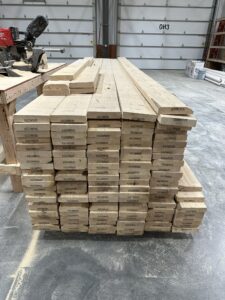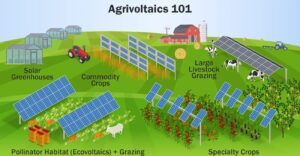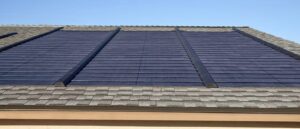Dean and I had a very interesting meeting with the Heritage Resources Program Leader for the Rocky Mountain Region of the U.S. Forest Service last week and during our meeting we began discussing the idea of sustainability and historic preservation. This very topic will be the theme of the upcoming 2010 Saving Places Conference which is presented annually by Colorado Preservation Inc. and has become something of a hot (and sometimes controversial) topic in historic preservation circles as of late.
Both Sustainability and Historic Preservation are passions for me personally, and have played a huge role in my pursuit of architecture. I believe that sustainability is much more than “green building” and must effectively balance environmental, economical & social concerns in order to be successful. As a very important social concern in the built environment, I view the practice of Historic Preservation as both the source of many important sustainability concepts, methods and strategies and also as a valuable Green Design strategy in and of itself. Not much more than 100 years ago, most buildings were built according to many of today’s “green” standards out of necessity. They were built according to long standing practices that took the natural forces, site considerations and efficiency of the building and it’s site into account because that was the only way that you could afford to build. Materials, transportation and resources were not as readily available as they are today. In addition, they were built using local materials and craftsman who were experts in using regionally important practices, a concept only added to the U.S. Green Building Council’s LEED Rating Systems as of 2009! It is a broadly held misconception today that all old buildings are not energy efficient. It wasn’t until somewhat recently (starting in the 50’s & 60’s), that buildings and their systems started becoming seriously inefficient with the widespread availability of cheap materials and energy which made it economical to build this way. Many historic buildings have terrific thermal envelopes and incorporate great green building strategies such as passive solar design & natural ventilation. Preserving an existing historic building can be a very effective sustainable design strategy for today and can preserve local cultural resources, conserve natural resources, keep tons of waste out of the landfill and often save money at the same time!
It is important, however, to approach a Historic Preservation project with sensitivity when considering incorporating green building strategies. Slapping some PV panels onto the building would be an even less successful green strategy in a historic preservation project than it is in any green building project. Depending on the intended use of the project after completion and the historic preservation goals for the project, there is a broad range of green building strategies that could be incorporated into the project. For example, beyond upgrades to the buildings equipment and fixtures, alternative power sources such as geothermal, remote wind power or remote ground mount PV installations could be considered (especially for remote or “off-grid” locations) that are hidden underground at the building site. In addition, rigid insulation and wiring can be effectively hidden behind traditional plastering methods at building interiors to upgrade the thermal envelope and systems, if necessary. These are just a couple examples of how the addition of new technologies can be incorporated into a project without compromising the integrity of the preservation goals. The important and pivotal piece of the success of the project becomes the prioritization and communication of the project goals. Effective project planning, prioritization of the project goals and a little bit of creativity and innovation can lead to a very successful and sustainable historic preservation project!











1 thought on “Historic Preservation and Sustainability – One Strategy Contributing to Both Goals”
Elicia, thank you for your wonderful insight.
I too have always had a passion for historic preservation and conservation, and about a year ago started working on Project B&B Green. Quickly stated, the goal of Project B&B Green is to acquire a preexisting, historic structure in New Jersey. While preserving the cultural value of the building, the structure will be renovated into a “green” bed and breakfast. Utilizing the structures historic environmental strategies, the latest eco-technologies and EnergyStar products, a complete LEED v3 update will transform the structure into a premier “green” bed and breakfast destination.
My overall vision for Project B&B Green developed because of many factors, though the fundamentals were instilled early in my childhood. Most notably, I was raised in a Pre Civil War (circa 1864) homestead that my father inherited from our ancestors. As early as I can recall, my parents composted year-round, kept a 100’x40′ summer garden of fresh vegetables & herbs, and my father kept bee hives. They have always stressed the importance of reducing waste & conservation.
Later in life, I began to realize the habits which were instilled so early in my life, were not wide spread. My awareness of responsibility was far different from that of the “norm”. From this, I have always felt the means to encourage eco responsibility is by continuing to challenge people’s perception.
Project B&B Green evolved from the meshing of my love for historic preservation, a desire to inspire eco tourism, and to develop community through local spirit and vendor support. As a stretch goal, I hope Project B&B Green can be used as a prototype for cities and towns throughout the US.
Project B&B Green strives to ensure our future by preserving the past. Learn more & become a Fan on FB or follow us on Twitter (projectbbgreen)
I look forward to working with you soon!
Comments are closed.